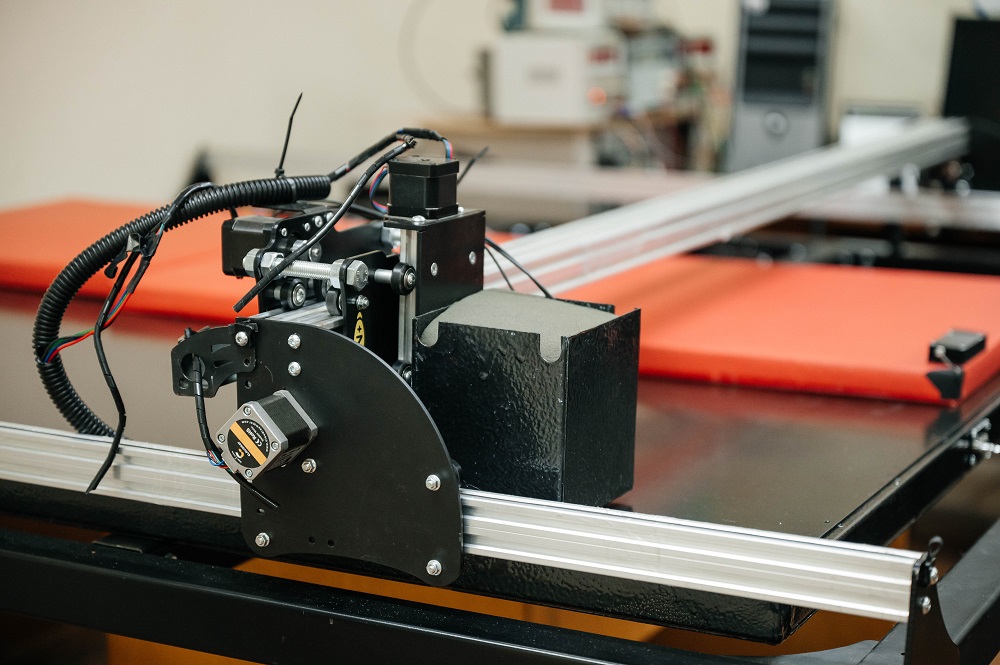TAIGA (Tunka Advanced Instrument for Cosmic Ray and Gamma Astronomy) is a megasciences project to build the largest gamma-ray observatory on the territory of the Tunka Astrophysical Center for Collective Use of the Irkutsk State University. It is designed to register ultra-high energy particles coming from the Universe. The results obtained will allow solving a number of fundamental problems of elementary particle astrophysics and gamma-ray astronomy. In addition, the very process of building a gamma-ray observatory provides an opportunity to test new technologies and solve problems in nanosecond electronics, multiprocessor data acquisition systems, and so on. The project is implemented by an international collaboration led by the Research Institute of Applied Physics of ISU. In 2023, Tomsk Polytechnic joined the TAIGA project.
A new TAIGA-Muon unit is being set up in the Tunka Valley, and it will be used to study the mass composition of cosmic rays (CRs) with energies above 1016 eV and the suppression of hadronic background in the registration of high-energy gamma rays. On a global scale, this unit will bring humanity closer to answering the question of the origin of cosmic rays of such enormous energies and to understanding the mechanisms of their propagation in the Universe. This is one of the most important tasks of modern astrophysics. The area of the new detector is expected to be about two thousand square meters.
Only three clusters of the TAIGA-Muon unit have been deployed so far. Each cluster has eight ground-based scintillation detectors to record all charged particles of the broad atmospheric shower and eight underground detectors at a depth of 1.7 meters to record the muon component. The meters are geometrically arranged: above-ground meters are strictly paired with underground meters.The main challenges in designing detectors of this size are achieving high light collection uniformity and particle arrival time accuracy. To overcome this limitation, new scintillation detectors that would accurately record radiation are required. Tomsk Polytechnic University is working on solving this problem,
Scientists at TPU are working on a new design of a scintillation detector using spectroscopic fibers (WLS) and silicon light receivers (SiPM). The devices shall provide inhomogeneity of signal amplitude dependence over the detector area not worse than 10 % and dynamic range of signal amplitude linearity not less than 100.
"We have developed three versions of scintillation detectors. The first one has grooves on one frontal scintillator surface for WLS fibers articulated with a SiPM light receiver. It has a small size and an amplitude response inhomogeneity of 10%. Four such detectors placed in a single one square meter enclosure will give an amplitude response inhomogeneity of 10% and provide the required amplitude linearity range of at least 100. The second one has a large size and grooves on the two frontal scintillator surfaces for WLS fibers articulated with a single SiPM light receiver. The third one is also large-size, consisting of scintillation pellets around spectroscopic fibers, the light from which is output to a single SiPM. We need to choose the best detector based on its characteristics and price. In addition, it is important to develop an enclosure for the detector based on the fact that it should work "outside the window", - adds Gennady Dudkin.
The thickness of the scintillation detectors developed by TPU scientists may vary from 27 to 30 mm, and the sizes range from 500 mm to 1,000 mm. The total weight of the scintillation plate can reach 36 kilos, and the detector itself - up to 52 kilos. In the future, Tomsk Polytechnic University will launch a low-volume production of such detectors.
In addition, TPU researchers developed a stand for detector characteristics conditioning. It enables to measure the homogeneity of the amplitude response and the range of amplitude linearity.
